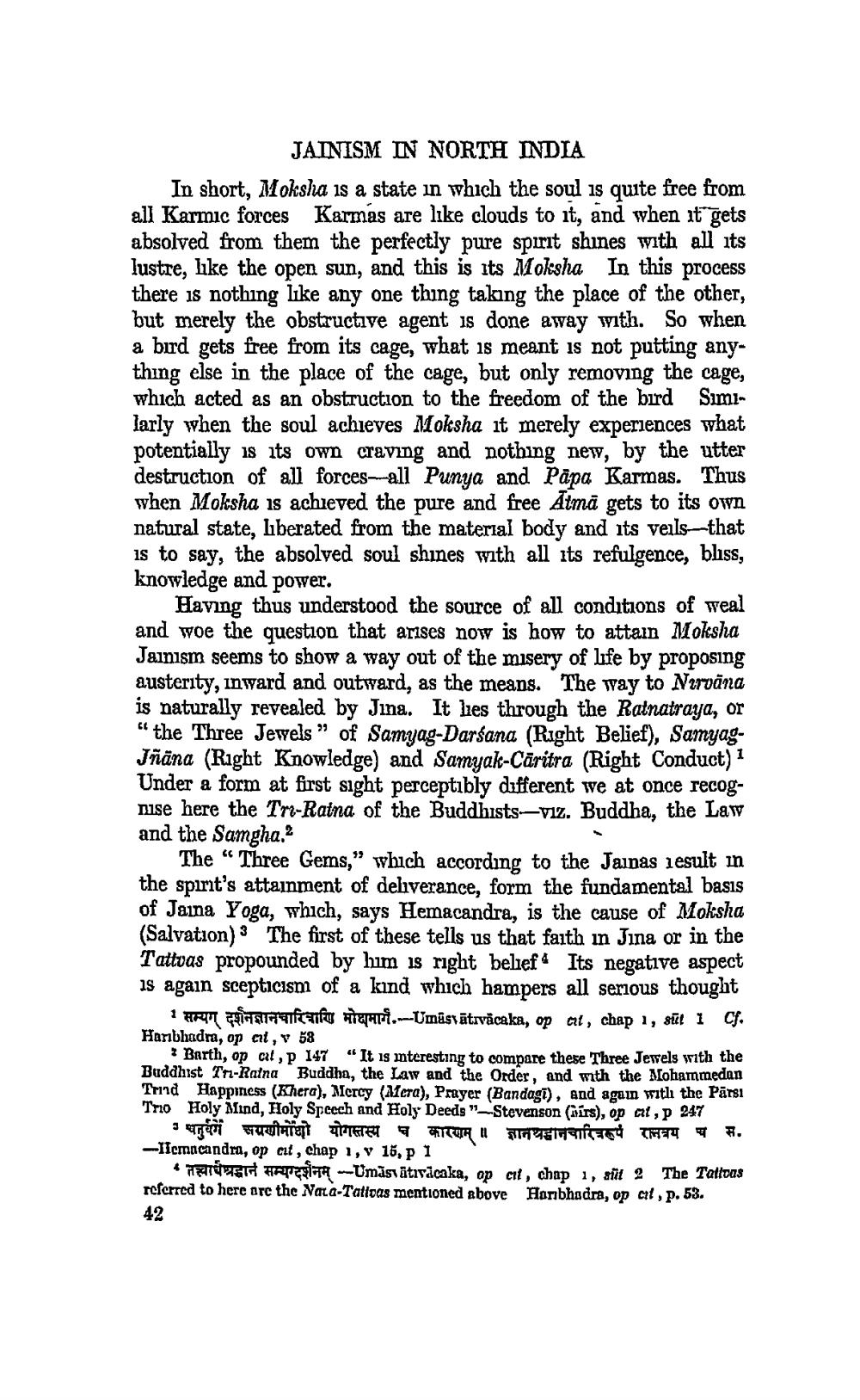________________ JAINISM IN NORTH INDIA In short, Mokslia is a state in which the soul is quite free from all Karmic forces Karmas are like clouds to it, and when it gets absolved from them the perfectly pure spirit shines with all its lustre, like the open sun, and this is its Moksha In this process there is nothing like any one thing taking the place of the other, but merely the obstructive agent is done away with. So when a bird gets free from its cage, what is meant is not putting anything else in the place of the cage, but only removing the cage, which acted as an obstruction to the freedom of the bird Similarly when the soul achieves Moksha it merely experiences what potentially is its own craving and nothing new, by the utter destruction of all forces-all Punya and Papa Karmas. Thus when Moksha is achieved the pure and free Atma gets to its own natural state, liberated from the material body and its veils-that is to say, the absolved soul shines with all its refulgence, bliss, knowledge and power. Having thus understood the source of all conditions of weal and woe the question that arises now is how to attain Moksha Jainism seems to show a way out of the misery of life by proposing austerity, inward and outward, as the means. The way to Nirvana is naturally revealed by Jina. It lies through the Ratnatraya, or "the Three Jewels" of Samyag-Darsana (Right Belief), SamyagJnana (Right Knowledge) and Samyak-Caritra (Right Conduct) Under a form at first sight perceptibly different we at once recognise here the Tr-Raina of the Buddhists-viz. Buddha, the Law and the Samgha. The "Three Gems," which according to the Jainas nesult in the spirit's attainment of deliverance, form the fundamental basis of Jaina Yoga, which, says Hemacandra, is the cause of Moksha (Salvation). The first of these tells us that faith in Jina or in the Tattvas propounded by him is right belief Its negative aspect is again scepticism of a kind which hampers all serious thought 1 RT 9799fcfu Hari..--Umas atrvacaka, op at, chap 1, sit 1 Cf. Hanbhadr, op at, v 58 ? Barth, op cit,p 147 "It is mteresting to compare these Three Jewels with the Buddhist In-Ratna Buddha, the Law and the Order, and with the Mohammedan Tund Happiness (Khera), Mercy (Mera), Prayer (Bandagi), and again with the Parsi Trio Holy Blind, Holy Speech and Holy Deeds "-Stevenson (irs), op at, p 247 पर्वगे अग्रणीमोंछो योगस्तस्य च कारणाम // ज्ञानबहानचारित्ररूप रामवय म. --IIcmacandra, op at, chap 1, v 15, p 1 TUBER Farm --Umas ativacaka, op cit, chap 1, afit 2 The Tativas referred to here are the Nata-Tattoas mentioned above Honbhadra, op cit, p. 53. 42




